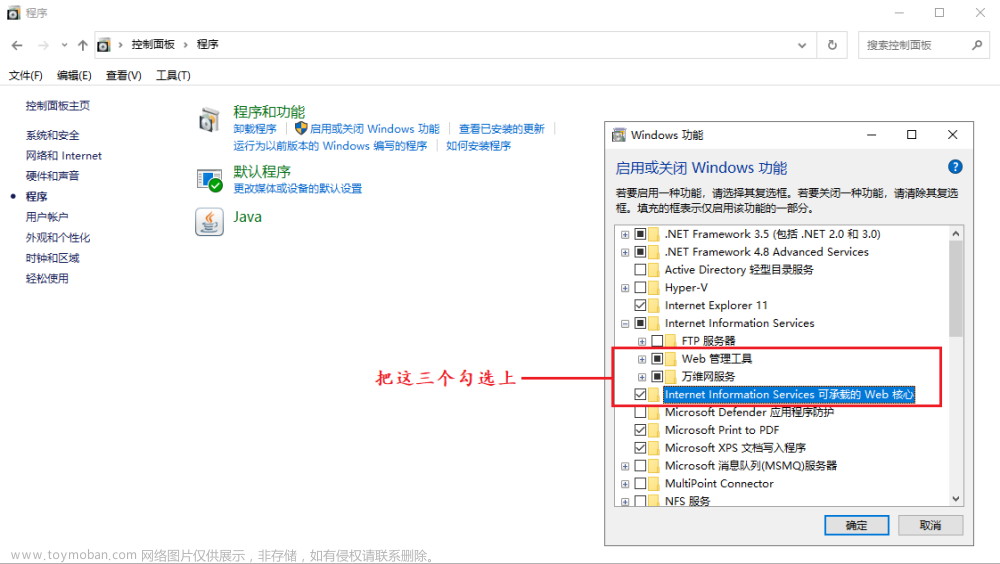Android,NanoHTTPD搭建服务器,接受Http请求最佳实践
1,了解
安卓app,作为服务器,接受Http,get post 请求推送数据,NanoHTTPD是一个免费、轻量级的(只有一个Java文件) HTTP服务器,可以很好地嵌入到Java程序中。支持 GET, POST, PUT, HEAD 和 DELETE 请求,支持文件上传,占用内存很小。
开源地址:GitHub - NanoHttpd/nanohttpd: Tiny, easily embeddable HTTP server in Java.
2,引入依赖
implementation 'org.nanohttpd:nanohttpd:2.3.1'
3,开始集成
这里需要注意以下三点问题:
- 系统端口:0~1023,用于运行标准服务,例如 HTTP 服务(端口 80)、FTP 服务(端口 21)等。
注册端口:1024~49151,用于运行注册的应用程序或服务,例如 DNS 服务(端口 53)、SMTP 服务(端口 25)等。
动态/私有端口:49152~65535,可以被动态分配给任何应用程序或服务,通常用于客户端。 所以,如下代码,我们声明监听的端口是49152,避免端口被占用- 请求携带中文,需要将请求头设置
UTF-8字符集,防止中文乱码,如下代码27行进行相关处理;- 客户端发送
POST请求,获取POST,Body参数,需要session.parseBody(new HashMap<String,String>()),如下代码40行处理,获取Body参数。
3.1 自定义类,继承 NanoHTTPD
public class MyNanoHttpdServer extends NanoHTTPD {
//声明服务端 端口
private static final Integer HTTP_PORT = 49152;
public MyNanoHttpdServer(String hostname, int port) {
super(hostname, port);
}
private volatile static MyNanoHttpdServer myNanoHttpdServer;
//TODO 单例模式,获取实例对象,并传入当前机器IP
public static MyNanoHttpdServer getInstance(String ipAddress) {
if (myNanoHttpdServer == null) {
synchronized (MyNanoHttpdServer.class) {
if (myNanoHttpdServer == null) {
myNanoHttpdServer = new MyNanoHttpdServer(ipAddress, HTTP_PORT);
}
}
}
return myNanoHttpdServer;
}
@Override
public Response serve(IHTTPSession session) {
//TODO 解决客户端请求参数携带中文,出现中文乱码问题
ContentType ct = new ContentType(session.getHeaders().get("content-type")).tryUTF8();
session.getHeaders().put("content-type", ct.getContentTypeHeader());
return dealWith(session);
}
private Response dealWith(IHTTPSession session) {
Date dateTime = new Date();
if (Method.POST == session.getMethod()) {
//获取请求头数据
Map<String,String> header = session.getHeaders();
//获取传参参数
Map<String, String> params = new HashMap<String, String>();
try {
session.parseBody(params);
String paramStr = params.get("postData");
if(StringUtils.isEmpty(paramStr)){
return newFixedLengthResponse("success");
}
paramStr = paramStr.replace("\r\n"," ");
JSONObject jsonParam = JSON.parseObject(paramStr);
Map<String,Object> result = new HashMap<>();
//TODO 写你的业务逻辑.....
//响应客户端
return newFixedLengthResponse("success");
} catch (IOException e) {
e.printStackTrace();
} catch (ResponseException e) {
e.printStackTrace();
}
return newFixedLengthResponse("success");
}else if (Method.GET == session.getMethod()){
Map<String, List<String>> parameters = session.getParameters();
return newFixedLengthResponse("success");
}
return newFixedLengthResponse("404");
}
public static Response newFixedLengthResponse(String msg) {
return newFixedLengthResponse(Response.Status.OK, NanoHTTPD.MIME_HTML, msg);
}
}
3.2 在 AndroidMainifest.xml,开启网络权限,注册服务,后台运行
<!--开启网络权限-->
<uses-permission android:name="android.permission.INTERNET" />
<application>
<!--注册服务>
<service android:name=".nanoHttpd.MyNanoHttpService" />
</application>
自定义服务类,继承 Service文章来源:https://www.toymoban.com/news/detail-494900.html
public class MyNanoHttpService extends Service {
private MyNanoHttpdServer httpServer = MyNanoHttpdServer.getInstance(null);
@Nullable
@Override
public IBinder onBind(Intent intent) {
return null;
}
@Override
public void onCreate() {
super.onCreate();
try {
httpServer.start();
} catch (Exception e) {
e.printStackTrace();
startService(new Intent(this,MyNanoHttpService.class));
}
}
@Override
public int onStartCommand(Intent intent, int flags, int startId){
return super.onStartCommand(intent, flags, startId);
}
public void onDestroy() {
httpServer.stop();
}
}
在MainActivity 启动服务文章来源地址https://www.toymoban.com/news/detail-494900.html
public class MainActivity extends AppCompatActivity {
@Override
protected void onCreate(Bundle savedInstanceState) {
super.onCreate(savedInstanceState);
setContentView(R.layout.activity_main);
//实例化 获取ip 地址
MyNanoHttpdServer.getInstance(getIPAddress());
//启动服务监听
startService(new Intent(this, MyNanoHttpService.class));
}
/**
* 获得IP地址,分为两种情况:
* 一:是wifi下;
* 二:是移动网络下;
*/
public String getIPAddress() {
Context context = WelcomeActivity.this;
NetworkInfo info = ((ConnectivityManager) context
.getSystemService(Context.CONNECTIVITY_SERVICE)).getActiveNetworkInfo();
if (info != null && info.isConnected()) {
if (info.getType() == ConnectivityManager.TYPE_MOBILE) {//当前使用2G/3G/4G网络
try {
//Enumeration<NetworkInterface> en=NetworkInterface.getNetworkInterfaces();
for (Enumeration<NetworkInterface> en = NetworkInterface.getNetworkInterfaces(); en.hasMoreElements(); ) {
NetworkInterface intf = en.nextElement();
for (Enumeration<InetAddress> enumIpAddr = intf.getInetAddresses(); enumIpAddr.hasMoreElements(); ) {
InetAddress inetAddress = enumIpAddr.nextElement();
if (!inetAddress.isLoopbackAddress() && inetAddress instanceof Inet4Address) {
return inetAddress.getHostAddress();
}
}
}
} catch (SocketException e) {
e.printStackTrace();
}
} else if (info.getType() == ConnectivityManager.TYPE_WIFI) {//当前使用无线网络
WifiManager wifiManager = (WifiManager) context.getSystemService(Context.WIFI_SERVICE);
WifiInfo wifiInfo = wifiManager.getConnectionInfo();
//调用方法将int转换为地址字符串
String ipAddress = intIP2StringIP(wifiInfo.getIpAddress());//得到IPV4地址
return ipAddress;
}
} else {
//当前无网络连接,请在设置中打开网络
}
return null;
}
/**
* 将得到的int类型的IP转换为String类型
* @param ip
* @return
*/
public static String intIP2StringIP(int ip) {
return (ip & 0xFF) + "." +
((ip >> 8) & 0xFF) + "." +
((ip >> 16) & 0xFF) + "." +
(ip >> 24 & 0xFF);
}
}
4,总结
- 如果想要APP保持服务持久可用,又不被系统限制网络,,可以进入系统设置中设置“电池不优化”。
- 根据之前的并发请求测试发现,只会返回同一条数据,而不是分别响应每一个接口请求。
目前尚未找到适合的处理方式,暂且只能控制请求端的请求频次。 - 如果并发请求大,请不要使用NanoHTTPD,还是通过JAVA和Spring 来做服务。
到了这里,关于【NanoHTTPD】Android,使用NanoHTTPD搭建服务器,接受Http请求,最佳实践的文章就介绍完了。如果您还想了解更多内容,请在右上角搜索TOY模板网以前的文章或继续浏览下面的相关文章,希望大家以后多多支持TOY模板网!











